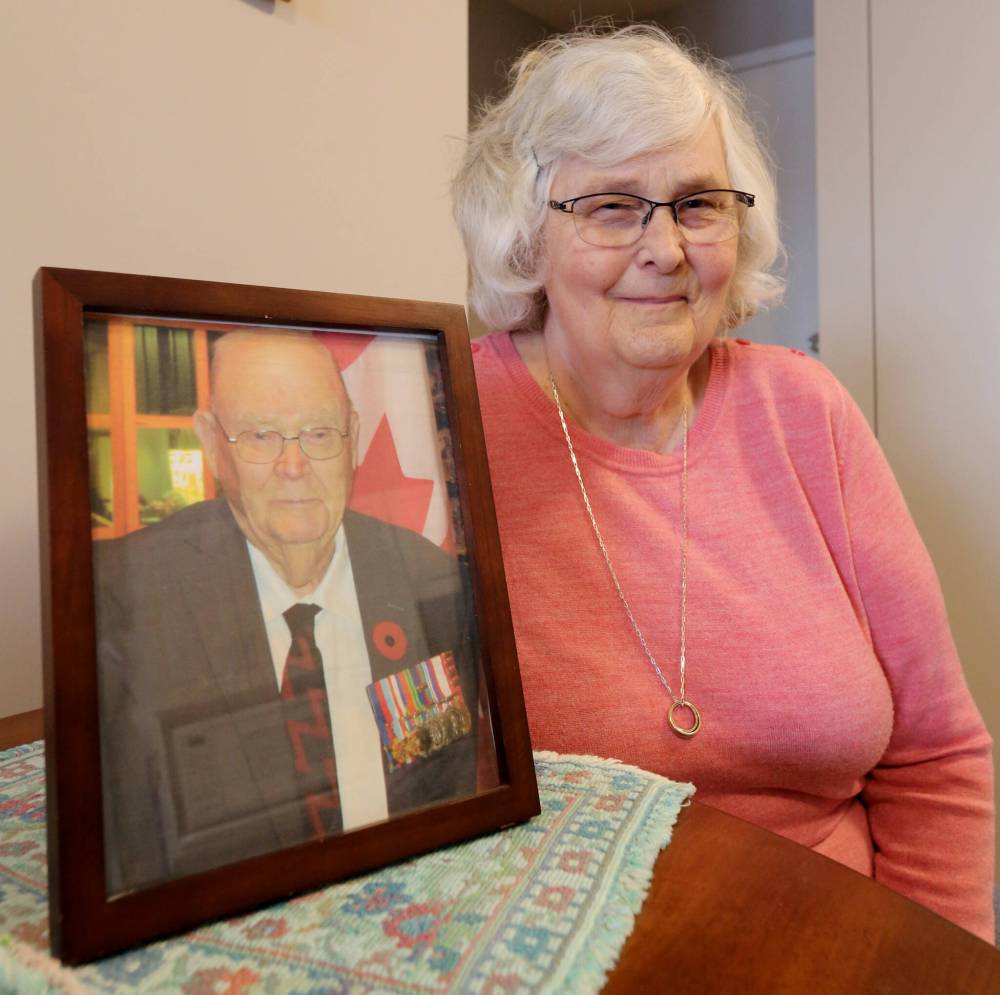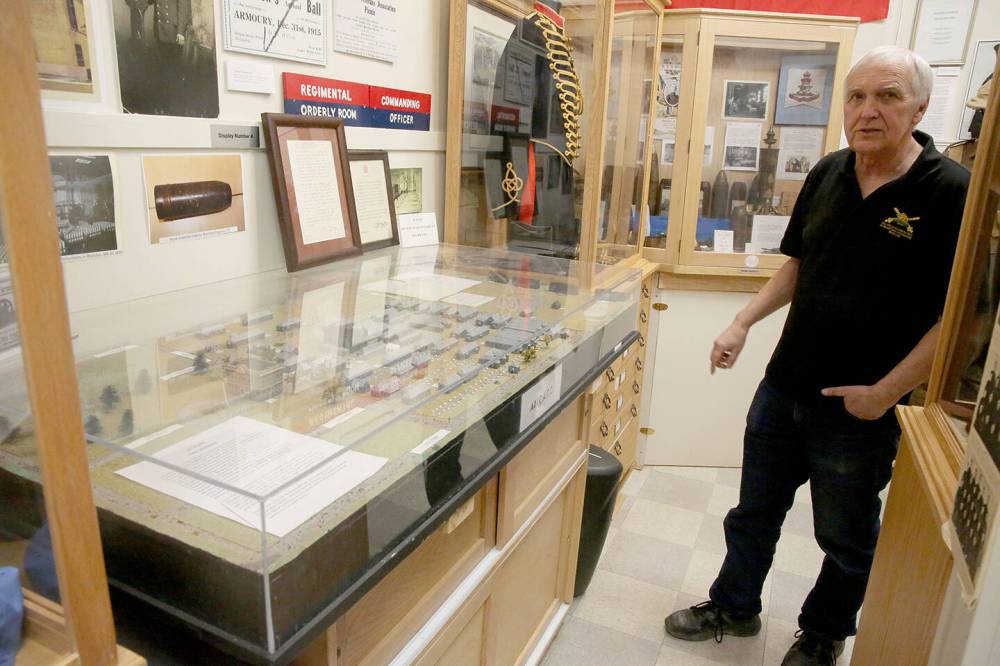Museum has plenty of secrets to be discovered
Advertisement
Read this article for free:
or
Already have an account? Log in here »
We need your support!
Local journalism needs your support!
As we navigate through unprecedented times, our journalists are working harder than ever to bring you the latest local updates to keep you safe and informed.
Now, more than ever, we need your support.
Starting at $15.99 plus taxes every four weeks you can access your Brandon Sun online and full access to all content as it appears on our website.
Subscribe Nowor call circulation directly at (204) 727-0527.
Your pledge helps to ensure we provide the news that matters most to your community!
To continue reading, please subscribe:
Add Brandon Sun access to your Free Press subscription for only an additional
$1 for the first 4 weeks*
*Your next subscription payment will increase by $1.00 and you will be charged $20.00 plus GST for four weeks. After four weeks, your payment will increase to $24.00 plus GST every four weeks.
Read unlimited articles for free today:
or
Already have an account? Log in here »
Hey there, time traveller!
This article was published 16/02/2023 (992 days ago), so information in it may no longer be current.
Faye Carkener has one word for how she feels when she stands in the museum her father helped found, and that’s “proud.”
Carkener is the daughter of Arthur Ross Neale, former regimental sergeant major for the 26th Field Regiment who helped establish the 26th Field Regiment RCA/XII Manitoba Dragoons Museum in the Brandon Armoury following his retirement in the 1970s.
Run completely by volunteers, those who collect and care for the exhibits light-heartedly call it a “secret museum” as it seems not many people realize the brick building at the corner of 11th Street and Victoria Avenue contains a museum.

Faye Carkener is shown here with a photograph of her father, Arthur Ross Neale, a founder of the 26th Field Regiment RCA/XII Manitoba Dragoons Museum. Carkener volunteers at the museum her father helped establish. (Ian Hitchen/The Brandon Sun)
“My dad called it the best-kept secret in all of Brandon,” said Carkener, who carries on her family’s strong connection to the museum as a volunteer.
The mission of the museum is to preserve the history of southwest Manitoba units and their members who served their country. It began with a collection of First World War hat badges that were gathered by Carkener’s grandfather.
The museum seemed to gain its spirit and mission from Neale, who researcher Ted Krasicki described as “religious” about preserving the history of the local military units. He also firmly believed the public should be able to access the museum for free, unimpressed when other museums charged admission. To this day, there’s no fee to enter the 26th Field Regiment RCA/XII Manitoba Dragoons Museum.
“He said that was not right, ‘History is there for you to see for free,’” Carkener said. “That was his idea.”
Over the years, donated items have grown the collection of uniforms, hats, weapons, badges, books and other exhibits to the point that even Krasicki can’t put a number on them and some items are held in storage as the museum can’t display all of them at one time.
Housed in the oldest part of the armoury, a portion of the structure built in 1906, the museum opened in 1979, at the top of the building in the caretaker’s suite. It then moved downstairs to accommodate aging veterans who couldn’t climb the stairs.
The armoury building itself is an exhibit, having played a part in the history it describes. At the start of the First World War, it was home to three local militias that included the 12th Manitoba Dragoons, a cavalry unit formed in 1903, although members of the Dragoons joined with other units for The Great War and didn’t fight as a formed unit.
The Armoury was also where local men enlisted to join that fight, forming local battalions that included the 45th (Brandon) and the 79th (Manitoba). The museum includes a display about the Manitoba battalions and artillery batteries formed to fight in the First World War.
Also during the First World War era, the building was the centre for social activities such as dances and balls, concerts and picnics.
During the Second World War, members of the 12th Manitoba Dragoons served in armoured car regiments. Among the stories about the 12th Manitoba Dragoons featured in the museum is that of Lance Cpl. Kenneth Scott Ferguson, who had a bridge in Holland named after him. Ferguson was killed at the site of the bridge while fighting to liberate Holland in 1945. Banners hanging in the museum, given to the unit by grateful European citizens, testify to the impact the unit had on history.
With roots that stretch as far back as 1903, the 12th Manitoba Dragoons still exists, although it isn’t currently active. In 1964, it was placed on the Supplementary Order of Battle, which means it is ready to be resurrected if duty calls once again.
The 26th Field Artillery Regiment, which calls the Brandon Armoury home, was formed in 1936. During the Second World War, the regiment provided staff and instructors for the A4 Canadian Artillery Training Centre, a camp that covered 12 city blocks in the south part of the city.
The museum’s displays include a model of the training camp and the uniform of the regiment’s pipe band, which was formed in 1946 and still exists to this day.

Museum researcher Ted Krasicki stands beside a model of the A4 Canadian Artillery Training Centre that covered 12 city blocks in south Brandon during the Second World War. There is no admission charge to visit the museum, which is housed in the Brandon Armoury at the corner of 11th Street and Victoria Avenue. (Ian Hitchen/The Brandon Sun)
Members of all four of the regiment’s batteries were sent overseas during the Second World War. As part of the 4th and 5th Canadian armoured divisions, they fought in Italy, northwest Europe and Germany.
Now, the regiment is part of the 38 Canadian Brigade Group and its headquarters and its 71st Battery are located in Brandon. Its 13th Battery is in Portage la Prairie.
Krasicki seems to know a story or additional fact about each exhibit, but he credits Brandon University students for doing research for the displays.
“They’ve come up with stuff, just all kinds of stuff,” Krasicki said. “They did splendid work for us.”
Exhibits put faces to the history too, by telling the stories of local men who served, including Jack Bennett, who was captured by Japanese forces during the Second World War and worked on the famous Bridge on the River Kwai as a prisoner of war. Another display details the military service during the First World war of James Kirkcaldy, who was one of Brandon’s first residents and its police chief.
The museum also covers more recent military topics such as United Nations peacekeeping and Canada’s role in Afghanistan, and it includes a library and memorial garden. The story of Winnie the Pooh is included too, as something for children, given that the real bear the character is based on was a mascot in the Canadian army at the beginning of the First World War.
While focused on the past, the museum volunteers haven’t forgotten the future. The museum’s curator, Edd McArthur, said work has begun to preserve items digitally, and a catalogue of the museum’s books is already available online.
“We’re trying to digitize everything we have,” McArthur said. “All our pictures are in the process of being digitized. Most of our hat badges, and medals and everything like that are being digitized, or have been digitized.”
Krasicki also noted the museum is forming a display for Indigenous members of the military.
» ihitchen@brandonsun.com
